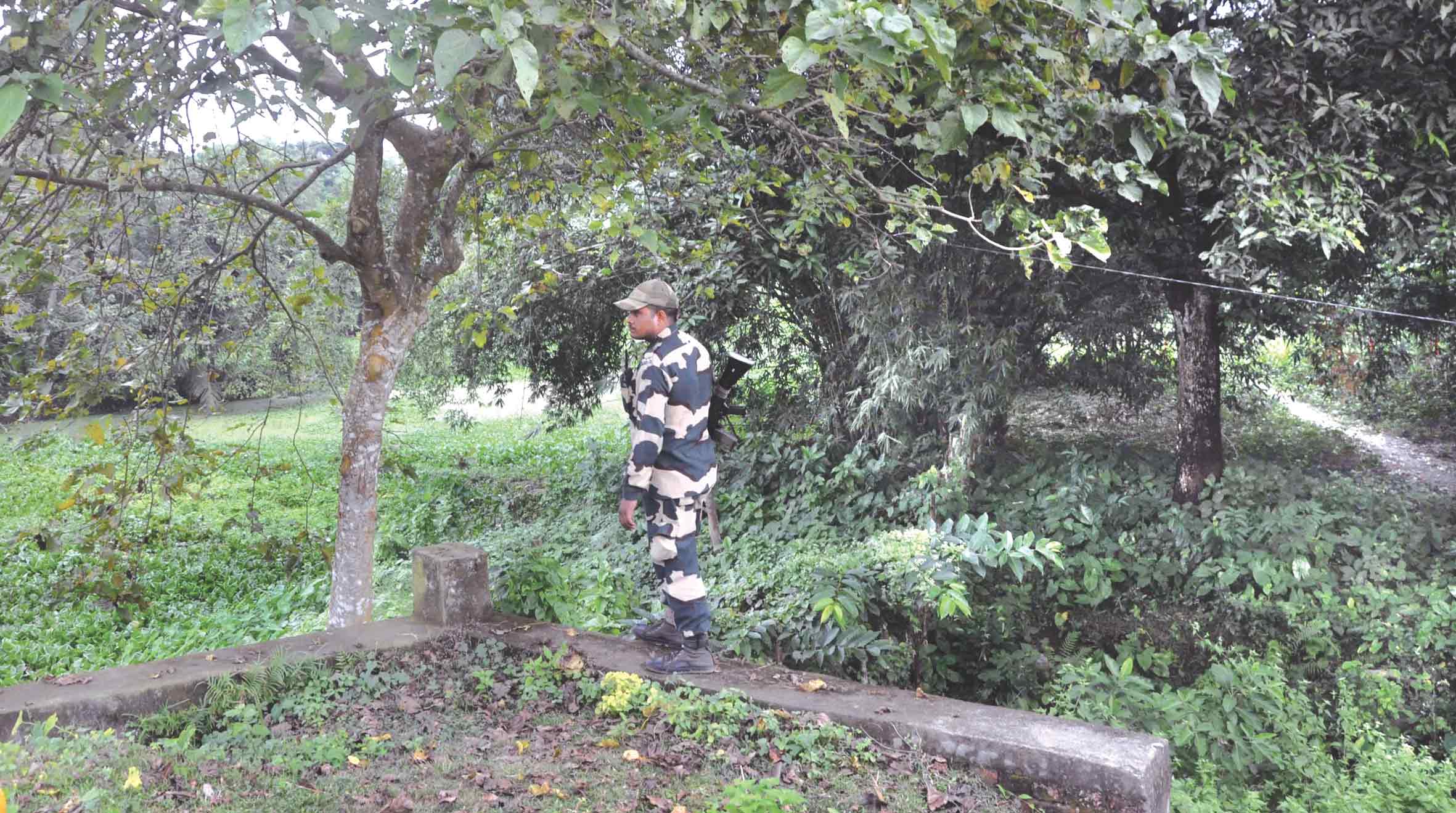The actual line demarcating the two countries appeared more imaginary than real, in spite of the elaborate Beating Retreat ceremony at the international border at Petrapole between India and Bangladesh. It is this very thought that consumed our minds as we stood at the India-Bangladesh border watching as people from one country were allowed to cross into another after being thoroughly inspected for contraband at the customs and immigration check-points. Borders exist in the minds of men but are manifested by a physical demarcation line, which divides the two countries who consist of people who are fundamentally the same.
The borders of Bangladesh exists today was established with the partition of Bengal and India in August 1947, when one region became East Pakistan as a part of the newly formed Pakistan.
Advertisement
Standing at the imposing rusted barbed wire fence that continues for as far as the eye can see, the land lying on either side of the fence is identical. The fence breaks the continuity of the lush green fields serving as a constant reminder that these two lands although identical in topography are in fact different countries.
One of the many interesting facts conveyed by the Border Security Guards escorting us was that Bangladeshi farm workers cross the border daily into India to cultivate crops that belong to Indians and are grown on Indian soil and then traverse back to their land at the end of a working day only to repeat the process the next day. They are employed in India but live in Bangladesh and represent the irony and futility of the concept of borders.
The BSF representatives accompanying us tried to draw a map to show the physical demarcation between both lands by using a far off lamppost or a water body at a distance to show where one country ends and the other begins. To one, the concept of borders itself seems entirely abstract and it is difficult to comprehend how borders are made and more importantly the relevance of their existence.
Along the border is located a village named Jayantipur which does not have any fencing or physical demarcation line separating it from Bangladesh. The village topographically exists on Indian soil but it is not fenced off from Bangladesh. There is no indication as to where Indian soil ends and Bangladesh begins. The villagers of Jayantipur are employed as farm labourers in both countries thus further confirming the futility of borders. The residents here are are in fact related to each other and there exists a barter system and an unsaid understanding in this close-knit community.
The railway line running from India to Bangladesh is contiguous and does not adhere to the existing border. The tracks are a popular spot for those crossing over from one country to the next to pause and take photographs. Here, we met a Bangladeshi civil servant along with his family who interacted with us at this border village. There were no differences between us but a shared interest in learning about the other person’s culture and exchanging contact information promising to keep in touch in future.
The land lacked any distinguishing features just like the people from both countries who shared a similar culture and language. Yet the border existed in cylindrical concrete dome dividers and it lived in the different uniforms of the border guards. Most importantly it festered in the minds of the people there who are reminded each day of their differences from those who live on the other side of the fence.
When viewed from space, land is unbroken and contiguous, separated only by water, no man-made borders are visible. On land, however, the conflicts of war have given way to the separation of land that was never meant to be divided. Man has somehow managed to alienate himself from those of his own species and set up walls to demarcate land that does not really belong to anyone. As the sun set that day, we mused about the ephemeral quality of life and the fact that although these concrete walls and barbed wire fences appeared to be permanent, we knew that change is the only constant and that these borders were but a faint line in the sand until a new regime decided to remove them and bring the countries together as they once were. For now, the borders remain standing as a daily reminder of how far mankind needs to work towards global inclusion so that one day no borders shall divide countries.
Student, Statesman Print Journalism School











